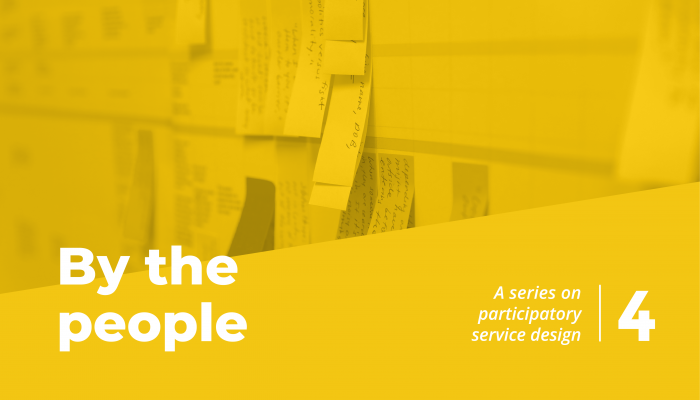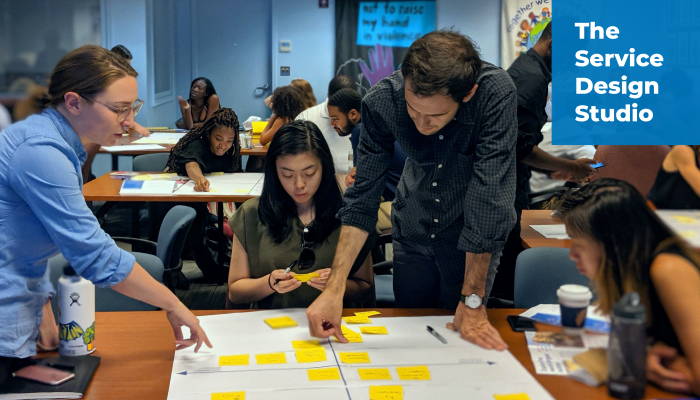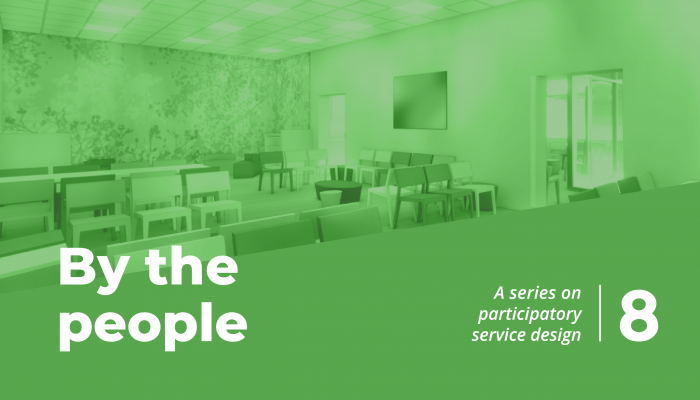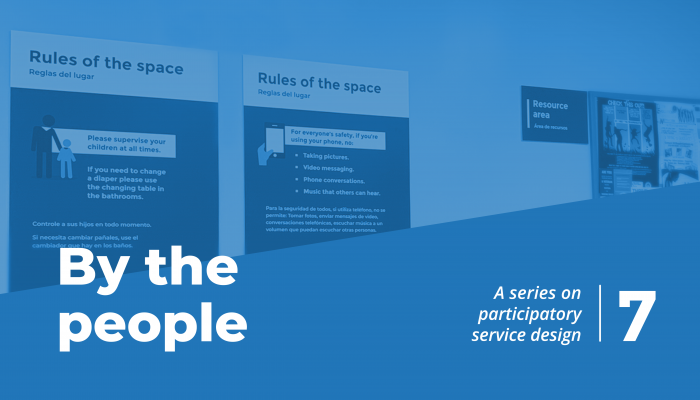This post is part of a series called By the people. It explores how the Office of Homeless Services (OHS) and the Office of Open Data & Digital Transformation (ODDT) are using participatory service design methods to improve the City’s homeless prevention, diversion, and intake services. If you’re new to the series, begin with our first post.
In our March post, we discussed how we applied the process and principles of participatory service design in our work with OHS. We also discussed the first two phases of a participatory design process. Now, we’ll look at the defining phase, and the projects that emerged as we listened to the stories and experiences of participants and staff.
From insights to opportunity
The goal of the defining phase in a participatory design process is to use what we’ve learned to drive collective action. We did this by synthesizing our findings into key opportunity areas. Ultimately, these opportunity areas helped us identify tangible projects we could take on.

What is an opportunity area?
An opportunity area is an open-ended statement that is often framed by a “How might we…?” question. They describe areas for growth, change, or improvement and suggest that a design solution is possible.
Service designers identify opportunity areas after a period of deep field work and research. Through our work with OHS, six opportunity areas emerged:
- Improving key moments in the prevention, diversion, and intake service experience: How might we collaborate with leadership, staff, and participants to ensure each key moment in the service is trauma-informed?
- Information access for participants and staff: How might participants and staff get accurate, understandable, and actionable information at the right point in time?
- Environment of access points: How might the City’s prevention, diversion, and intake access point sites offer trauma-informed and dignified service experiences for participants and staff?
- Communication across the service ecosystem: In an environment of continual change, how might we ensure that staff across all levels and organizations understand the what, why, and how of a new or improved policy?
- Organizational work culture: What infrastructure is required to ensure that staff feel supported in implementing the service on the ground?
- Inclusive decision-making processes: How might participants and staff contribute to the policies and standards that govern on-the-ground services? What does person-centered decision-making look like in practice?
Turning opportunities into projects
Based on the opportunity areas, we facilitated several brainstorming sessions with leaders, specialists, and staff members across prevention and diversion, intake, after-hours, and emergency housing sites. Each “How might we…?” question led to ideas for possible solutions and projects.
This process of co-designing or co-creating solutions invites people across roles, hierarchies, and experiences to participate in making decisions. By including the people most affected by the project work, we ensure that the solutions meet their needs and work in practice. Additionally, solutions have a greater chance of successful implementation when staff are actively involved in their creation.
Together with our project partners and leaders at OHS, we identified the projects that we would take on for the rest of 2018.
These projects were defined and prioritized based on specific criteria. Each one should:
- Impact the prevention, diversion, and intake service immediately and in the long term.
- Address the needs and priorities of participants and OHS prevention, diversion, and intake staff as identified via design research.
- Align with staff’s capacity to implement.
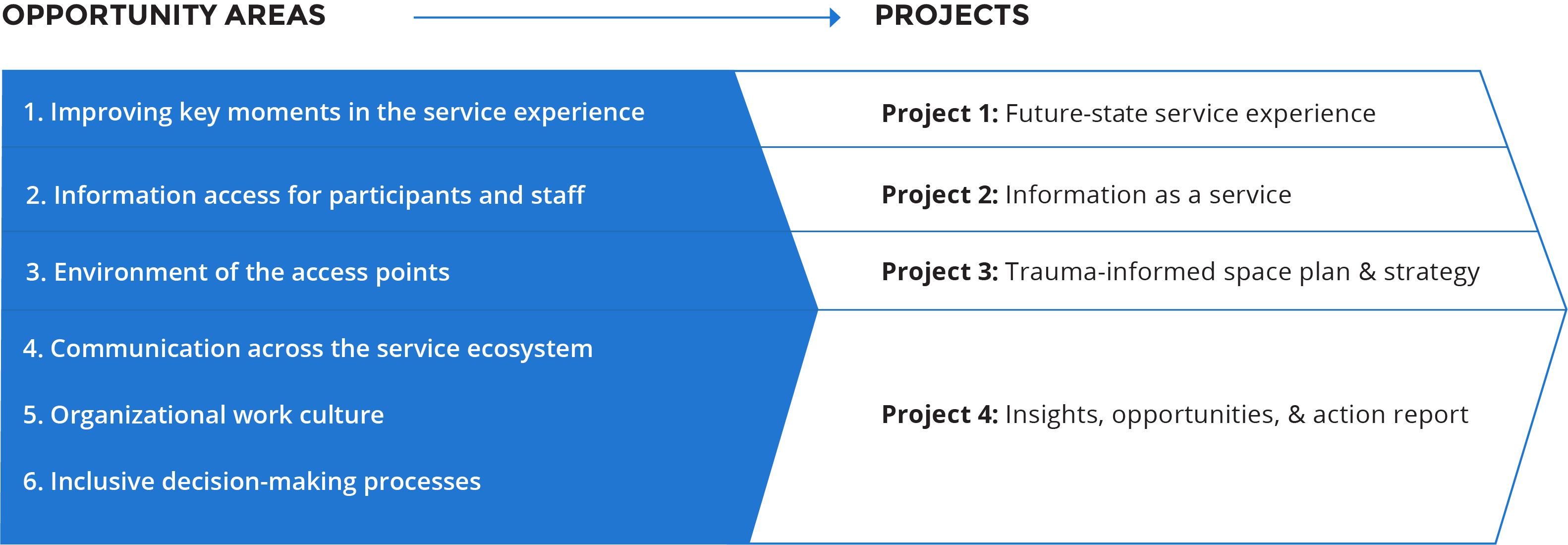
The projects we took on are:
- Future-state service experience: Co-designing to make key moments in the prevention, diversion, and intake service experience trauma-informed.
- Information as a service: Creating informational materials that clarify processes and enabling OHS to maintain materials over time.
- Trauma-informed space plan and strategy: Co-designing how the service environments can support participants and staff in moments of crisis.
- Insights, opportunities, and action report: Documenting the insights and ideas generated from design research so that OHS can use these findings to make future decisions.
Our next blog post will dig deeper into the future-state service experience project, scope of work, and key deliverables.
Questions or comments? Email oddt@phila.gov.

